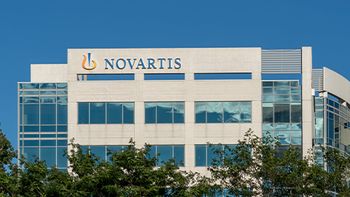
US primary distributors logged $294 billion in pharma sales in 2011, says HDMA
Cold chain products constitute 10% of SKUs, on average
Sales growth at nearly twice the level of pharma manufacturers was recorded by distributors who are HDMA members (which constitutes well over 95% of all pharma distribution in the US). These and other data are compiled in HDMA’s annual Factbook, now available from the Arlington, VA trade association, which represents most “primary” wholesalers (meaning, they generally take products directly from manufacturers, for distribution to pharmacies, hospitals and others). The Center for Healthcare Supply Chain Research, the research arm of HDMA, attributes the robust growth to the continued introduction of specialty biotech products (which tend to be higher-priced than traditional products). Distributor growth was 7%, while industry sales growth (measured by IMS Health) was 4%.
In line with the higher activity in specialty pharmaceuticals, HDMA report that distributors have, on average, 10% of the stockkeereping units (SKUs) require cold-chain storage and handling (while there are specialty pharmaceuticals that do not require temperature control, many of them do). Also, HDMA members distribution centers have, on average, 6.1 full-time equivalent workers (FTEs) devoted to temperature-controlled product handling. Interestingly, this has declined steadily for the past three years; there were 7.1 FTEs, and 9.6 in 2009. Despite a rising volume of cold-chain products, distributors are learning how to be more efficient in handling them. Finally, HDMA reports that only 8% of distributors monitor temperature of shipments, and 5% record that those readings. Temperature tracking and reporting are part of guidelines for good distribution practices (GDPs) but are not, as yet, a requirement.
HDMA’s Factbook is a carefully standardized (from year to year) compilation of original and secondary data. Among other notable findings in this year’s report:
- The number of HDMA member DCs has declined to by eight, to 150, in 2011
- The most commonly offered supplemental service to manufacturers is promotional material distribution (handled by 60% of members), and rapid new product launch, repackaging and data management services, offered by half of HDMA members.
- While two out of three HDMA members employ some type of location code in their order processing, the number that use the Global Location Number (GLN) of the GS1 organization is essentially zero. DEA registration numbers/locations, and proprietary systems, are much more common.
This year’s Factbook was published with support from Boehringer Ingelheim Pharmaceuticals, Inc.; RDC-Rochester Drug Cooperative, Inc.; TEVA Pharmaceuticals USA; EXP Pharmaceuticals Corp.; Ranbaxy Pharmaceuticals Inc.; and, Smith Drug Company, Div. J M Smith Corp. copies are available for purchase at HDMA’s
Newsletter
Stay ahead in the life sciences industry with Pharmaceutical Commerce, the latest news, trends, and strategies in drug distribution, commercialization, and market access.





